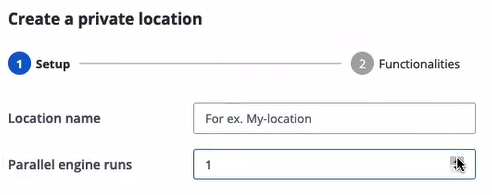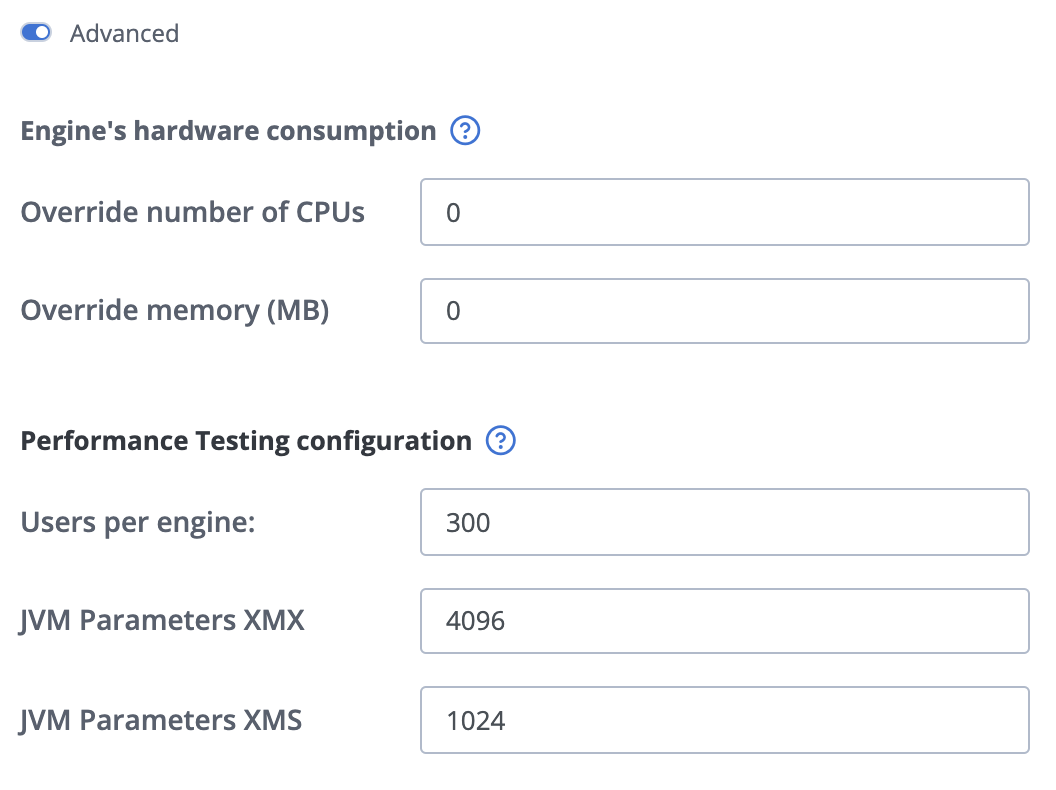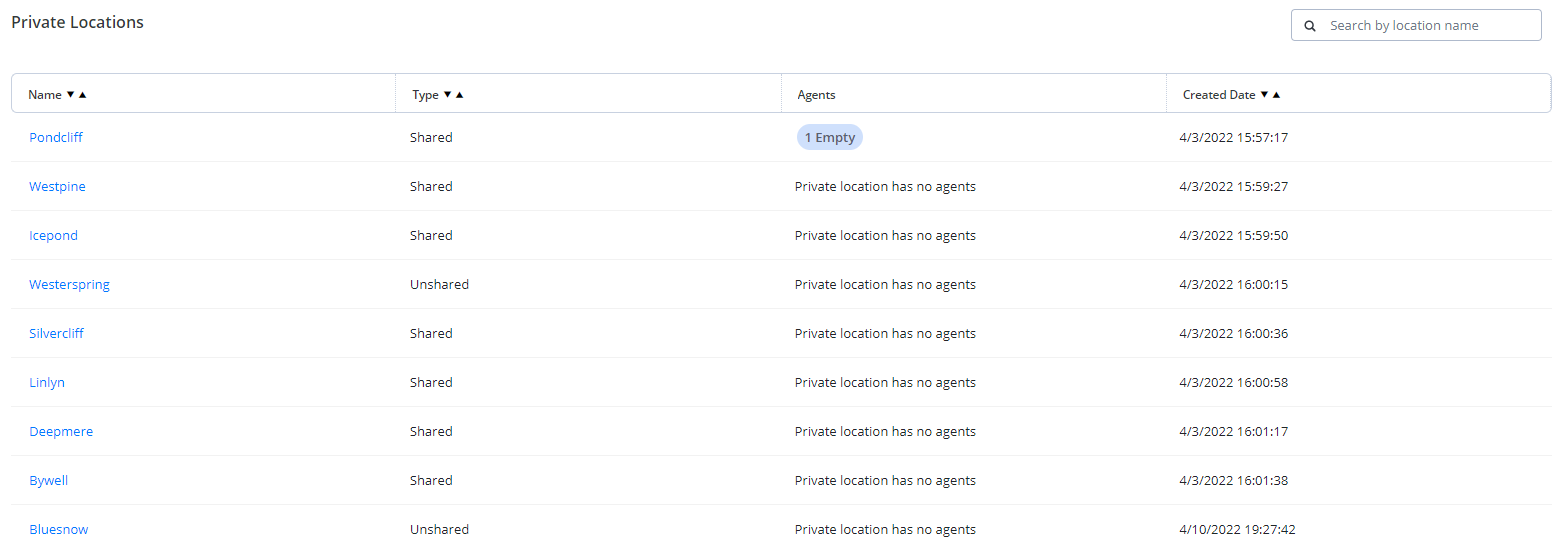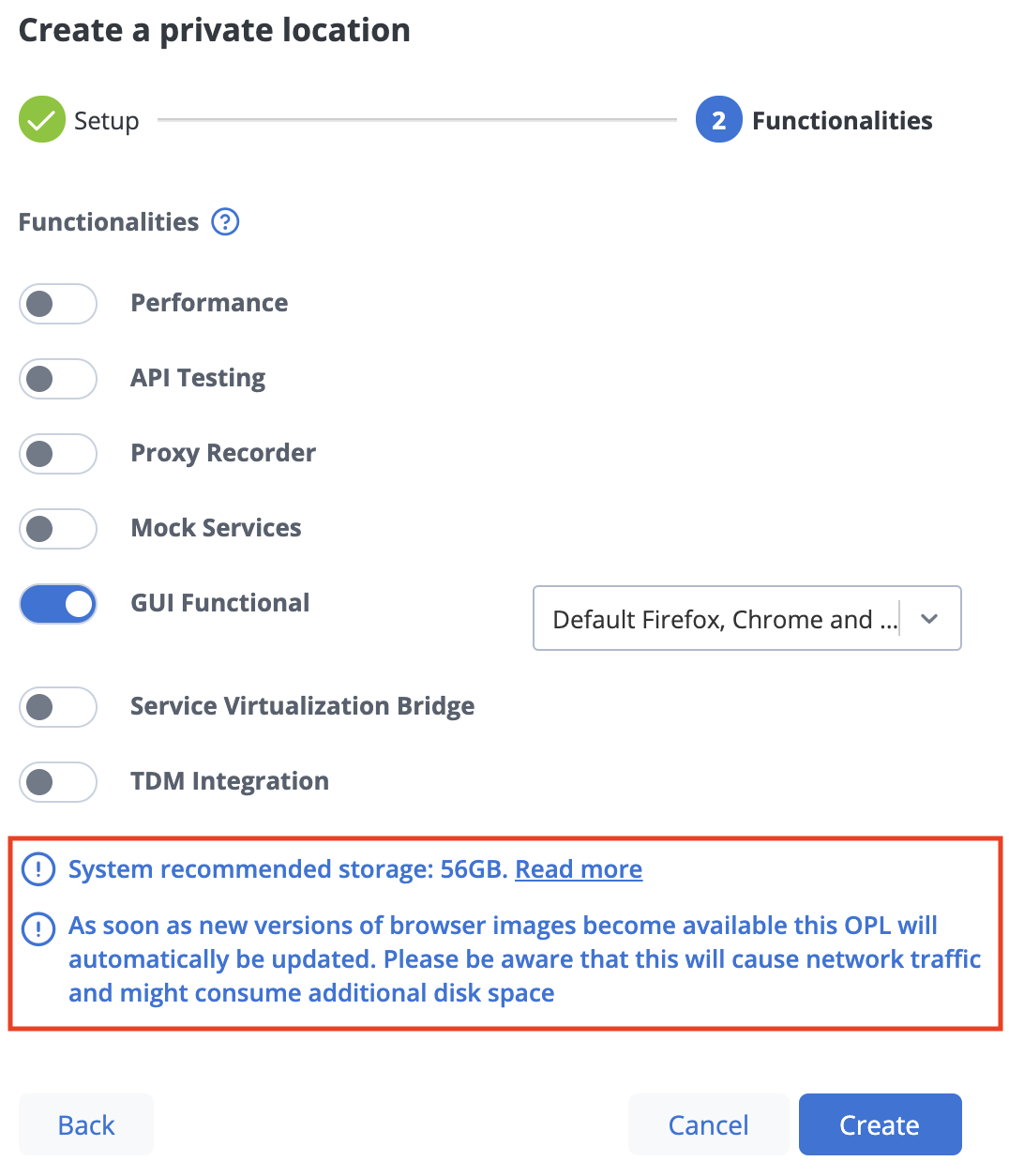Creating a Private Location
A Private Location (formerly known as a harbor) is a logical container on the BlazeMeter end. A private location contains one or more agents (formerly known as ships). Private locations are servers with our agent installed on your end. You can have multiple private locations in your account; each will define a unique “location” to choose when running tests and deploying virtual services. You need to be a workspace manager to create Private Locations.
Create a Private Location
Follow these steps:
- Log into your BlazeMeter account as a workspace manager.
- Navigate to Settings > Workspace > Private Locations.
- Click + to add a new private location.
The Create a private location window opens. - Fill out the Setup section.

- Location name - Give your private location a meaningful name that helps you team members choose the most appropriate location in the Location list when configuring tests.
- Parallel engine runs - Enter the number of separate parallel tests each agent is allowed to run in this private location.
If using Kubernetes to create agents, enter a value greater than 1.
- Location name - Give your private location a meaningful name that helps you team members choose the most appropriate location in the Location list when configuring tests.
- (Optional) Toggle the Agent Log. When creating a new private location, the Agent Log is ON by default.
 To investigate agent failure or diagnose any agent connectivity issues, enable the agent log. You can view the logs and debug issues in real time. For more information, see Enabling and Downloading Agent Log.
To investigate agent failure or diagnose any agent connectivity issues, enable the agent log. You can view the logs and debug issues in real time. For more information, see Enabling and Downloading Agent Log. - (Optional) Toggle the Advanced slider.
For more information, see Set Up the Advanced Configuration. - Click Next.
- Select at least one functionality that you would like this private location to install on the agents that are added.
For more information, see Set Up the Functionalities. - Click Create.
You have created a Private location. The Private Location page opens and you can continue with the installation process for installing an agent. For more information, see the following installation procedures:
Verify that you see your Private Location in your Private Locations list, which is found in the Settings > Workspace > Private Locations section.
Set up advanced configuration
Engine hardware consumption
- Override number of CPUs
This will override the default number of CPUs to the whole number value of CPUs you want the engines to run with (i.e. 2 for 2 CPUs). - Override memory (MB)
This will override the default memory use for each engine in MB (i.e. for 8 GB of memory, set the number to 8192).
By default, containers created by the agent use the Docker Memory and CPU settings. These settings override the Docker maximum settings. If you enter a value greater than the maximum Docker settings, the agent uses the maximum settings instead. This option is available to help ensure that large containers designed for performance testing or Service Virtualization can later be reduced for less demanding tests or virtual services.
Performance testing configuration
- Users per engine
The number of virtual users that can be run on each individual test/engine. - JVM Parameters XMX
XMX specifies the maximum memory allocation pool for the Java Virtual Machine (JVM). - JVM Parameters XMS
XMS specifies the initial memory allocation pool for the Java Virtual Machine (JVM).
By default, the virtual service container will have an initial Java heap size (XMS) of 16 GB and a maximum Java heap size (XMX) of 3 GB.
- The current suggested configuration for this test type is 1 CPU and 2048 MB RAM per selected browser.
For running several browsers in parallel your machine should have ~(N+ceiling[N/20]) CPUs (where N - is the number of browsers, and ceiling[N/20] is the number of Taurus engines, with 1 Taurus engine per 20 browsers). For calculating the memory please, use the formula ((N+ceiling[N/20])*2048). - For example, if your test uses 2 browsers (Chrome and Firefox), the calculations will be the following:
- CPUs: (2+ceiling[2/20]) = 2+1 = 3
- RAM: (2+ceiling[2/20])*2048 = (2+1)*2048 = 6144
- Thus the machine should have at least 3 CPUs and 6144 MB of RAM.
- We recommend using SSD storage on the machine as it will speed up GUI test execution.
- For more than 8 parallel browsers, it's mandatory to have SSD storage.
Set up the functionalities
- Performance
Downloads all the images related to running Performance tests from BlazeMeter (using our docker registry, https://gcr.io/verdant-bulwark-278). This list includestaurus-cloud,apm-image,blazemeter/crane, andblazemeter(Legacy JMeter users ONLY) images. - Proxy Recorder
Downloads all the images related to creating and running the proxy recorder from BlazeMeter (using our docker registry, https://gcr.io/verdant-bulwark-278). This list includesblazemeter/proxy-recorderandblazemeter/craneimages. - Service Virtualization
Downloads all the images related to creating and running Service Virtualization from BlazeMeter (using our docker registry, https://gcr.io/verdant-bulwark-278). This list includesblazemeter/service-mockandblazemeter/craneimages. - GUI Functional (Shared run type only)
Downloads all the images related to GUI Functional test from BlazeMeter (using our docker registry, https://gcr.io/verdant-bulwark-278). This list includestaurus-cloud,apm-image,blazemeter/crane,blazemeter/charmander/firefox, andblazemeter/charmander/chrome.
The following options are available for the GUI Functional options:- Default Firefox, Chrome, Microsoft Edge and Safari - Installs the latest Firefox, Chrome, Microsoft Edge and Safari versions on the agent
- Select Version - Gives you the choice of the currently supported Chrome, Firefox, Microsoft Edge, and Safari versions:
- Chrome (latest 6 versions)
- Firefox (latest 6 versions)
- Microsoft Edge (latest 6 versions)
- Safari (latest 6 versions)
- All Firefox, Chrome, Microsoft Edge and Safari - Installs all Firefox, Chrome, Microsoft Edge and Safari versions on the agent
- Data Orchestration
- Delphix Integration - Downloads all the images related to the Delphix integration from BlazeMeter (using our docker registry, https://gcr.io/verdant-bulwark-278).
Example for Shared type:

